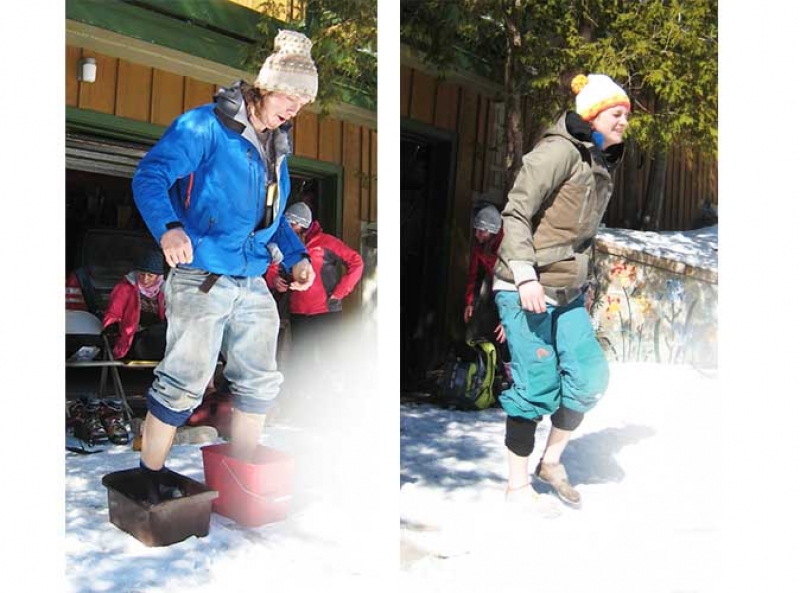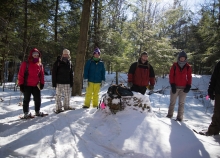
A Mysterious Track Leads to Cold Feet
This winter Nature Up North is featuring a Winter Ecology Series, in which St. Lawrence University students in Dr. Karl McKnight's Winter Ecology course share their observations from a weekly field trip to Glenmeal State Forest in Pierrepont. We hope you enjoy their accounts from days spent in the woods examining the fascinating ways plants and animals endure the North Country winter.
Kevin Tyler
3/13/2014
Upon our arrival in Pierrepont, we were presented with a pair of mystery tracks! The first was unlike anything we’d seen. As the class did our best to follow and speculate on the identity of the tracks, we failed to come to a consensus. We removed ourselves from the trail after about 50 yards and began to make our guesses. Was it a chipmunk? Or a weasel? Or was it a tiny avian dinosaur? We were getting closer! (No we weren’t). If any of us had, in fact, continued to follow this trail after our scheduled departure from it, we would have realized that this track was made by one of the least elusive creatures we’ve seen. It was a leaf.
The second track proved to be less of a challenge. We followed this on a slightly longer loop through the forest, taking note of the tracks small, “dog-like” shape and straight path through the woods. This combination of size, shape and behavior made this easy to identify as the path of a Red Fox.

We continued on our walk through the woods with an impromptu quiz on tree species and natural history. While I continue to be quite satisfied with my identification skills, I realized that more time and effort will be required to become familiar with the natural history of these long-living species. This was a valuable exercise, as there is no better practice (for me, at least) than getting out and being hands-on. Throughout the duration of this trek, we were treated with plenty of porcupine and grouse sign to keep us busy.
To end our day and send us on our way to spring vacation, we each donned a heavy-weight sock on one foot and a light-weight sock on the other, before inserting a thermal data-logger into each sock, dipping our feet into a bucket of ice-water and walking around for three minutes. Our goal was to view the difference in insulative quality between each sock. For my trial, viewing the data proved to be unnecessary, as three minutes of walking created a substantial difference in the feeling between my feet. The heavy-weight wool socked foot was completely comfortable, wet as it was, while my light-weight cotton(ish) socked foot got so cold it was somewhat painful.

The data would go on to indicate that what we felt as a group was true and that our heavy non-cotton socks were substantially better suited for insulation, particularly when soaked with cold water. While in today’s sock market, at least those that are worn by SLU Winter Ecology students, it is hard to find a pair of plain, cotton socks, the data conclusively indicated that the sock blends meant for everyday use, like my cotton/polyester/spandex Nike Basketball Socks, failed miserably when compared with the wool and acrylic heavy-weight socks that are available for cold weather use. Even on a day where you might think a light sock would be beneficial because of higher temperatures and potential foot-sweating, it seems apparent that the heavy socks would be optimal, as they performed admirably while completely soaked in ice-water.
This was a very interesting experiment that I would love to pursue further. Dr. McKnight posed an interesting question as to how animals can tolerate such extreme colds with nothing more than the fur between the cold and their hide. Unfortunately, I don’t think we’ll be able to go out and shove any thermo-loggers into the feet of these animals. Maybe someday, when I’m a grown-up scientist, I will get that opportunity.

